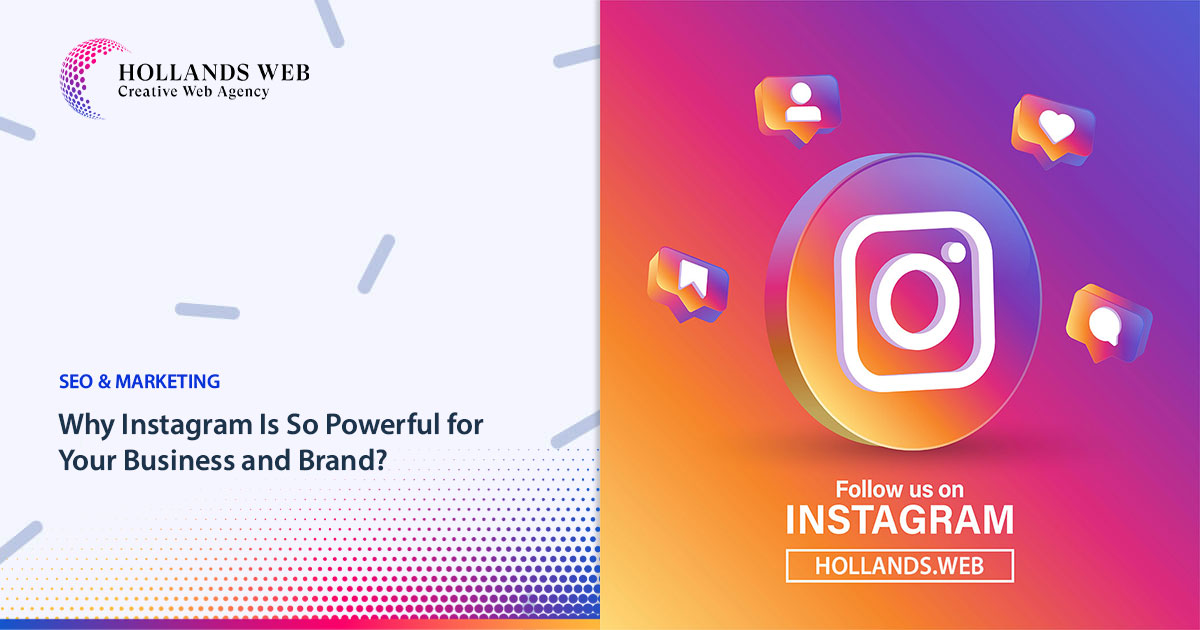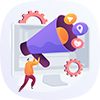No products in the cart.
At Hollands Web, we have experience building websites and digital strategies for clients of all sizes, and we know firsthand the workload on each project. While every project has its own quirks and challenges, designing and building a business website is a particularly complex process that requires an up-front investment in planning and strategy.
Existing corporate websites can often contain thousands of pages of content or even hundreds of different microsites. And a thorough overhaul of the design and information architecture of such sites can quickly become overwhelming. Building a corporate website from scratch is also challenging because it requires visionary planning for many situations and use cases that may not yet be realized.
Working with our enterprise clients over the years has given us insight into what works and what doesn’t when designing digital experiences at this level. Below we share some strategies that we know will have an impact.
Insist on user-centric
When redesigning or even building a brand new website, companies often fall into the trap of prioritizing the stories they want to tell over delivering the information users need to hear.
While your website should be the face of your business on the internet, it needs to do more than just look good. Remember, if you get to the heart of the matter, this site exists for only one purpose: to serve your users. Every decision made through the website should be based on whether the end result will benefit the user.
Periodically revisit this question throughout the strategy and planning stages and ask what else you can do to exceed user expectations. Make their experience more enjoyable, and ensure they leave your site with a positive impression and leave yours after achieving certain goals Companies. It’s helpful to do something with a website.
Understand user personalities and internal stakeholders
To stay user-centric, you must first understand your audience. At the corporate level, these audiences can be broad and include people from across the country or around the world who have different roles and functions and want to fulfil a variety of responsibilities in the field. While you may not be able to find a way to effectively target everyone, with a little work you can identify and isolate your most important audiences so you can tailor your site to meet their needs.
Internal stakeholders will also play an important role in determining the site architecture and design direction. Stakeholders from different sectors contributed valuable knowledge about client wishes and needs from their field experience. For example, marketing vs. sales or operations vs. HR would have different perspectives. Making these differences visible can give you a more complete picture of where the greatest opportunities lie.
Focus on content width, depth and layout
At the enterprise level, content requirements are often complex. As mentioned above, you need to reach many different audiences. And you need to tailor your content stream to each audience.
Try to find a balance between breadth and depth in terms of what you need to offer. Content that is too broad won’t have a meaningful focus, and tactics that are too narrow can irritate users who don’t see their problems or needs being addressed. Go too far and your audience will get lost in the weeds. Not deep enough and you won’t add value.
Almost as important as the type of content you create is how you present it to users. Keep in mind that online attention spans are getting shorter, so assume most people won’t read or view your content in its entirety. Design content layouts to easily scan text and highlight key points so you don’t miss them.
Always prioritize mobile devices
By now, every business with a website understands that the mobile experience is just as important to users as the desktop experience, if not more. Mobile usability is also a key factor in brand visibility in search.
From a user’s perspective, poor mobile usability was interpreted as a sign that the brand either didn’t care what the experience was like, or was stuck in a past where only desktop mattered. Both assumptions can erode user trust and, if left unchecked, can hurt website conversions and damage your brand image.
Of course, designing mobile experiences—especially retrofitting existing desktop experiences to improve mobile performance—only gets more complex at the enterprise level. Where content is robust and there can be many layers of navigation. But mobile priority is worth the effort to keep users happy, and it’s been shown to positively impact sales. The same applies to B2B and B2C recruiting.
Create a better business experience
While designing an effective digital experience for an organization presents unique challenges of scale and complexity. With a little strategic planning and a properly executed process. The goal is certainly achievable.
By focusing on what your users want and regularly reviewing what makes the experience faster, more efficient, and more satisfying. You can ensure that what you’re building, big or small, is both engaging and inspiring.






 Web Hosting
Web Hosting Web Designs
Web Designs Graphic Design
Graphic Design SEO
SEO Digital Marketing
Digital Marketing